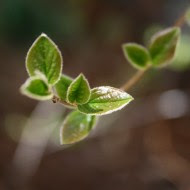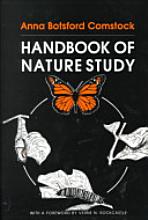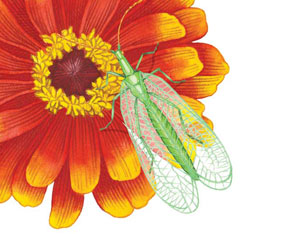 I don't know what the weather is like there, but our month of summer weather, long nights under starlit skies, and shorts gave way to more realistic March weather for New England -- a dusting of wet, sloppy snow today. Although it's not the 3" they were warning us about, and it really isn't cold, the snow was a reminder that we are, in fact, still in March, when just about any type of weather is possible.
I don't know what the weather is like there, but our month of summer weather, long nights under starlit skies, and shorts gave way to more realistic March weather for New England -- a dusting of wet, sloppy snow today. Although it's not the 3" they were warning us about, and it really isn't cold, the snow was a reminder that we are, in fact, still in March, when just about any type of weather is possible.A couple of weeks ago, we all took advantage of a beautiful Sunday afternoon, and took a family walk down to the Nipmuck Trail, part of the "blue-blazed" trail system established in many states. Because it was too early for a lot of other spring changes, we referred to this walk as a "bark walk," and we took the time to quiz one another's plant ID skills based on buds and bark, alone.
--------------------------------------------------------------------------------------------------------------
The Nipmuck Trail, Willington, Connecticut
Mr. B and I have decided that, being over 50, we need to be a little more assertive with our exercise program. Living so close to a well-marked trail system has distinct benefits. Hubby is recovering from a winter ankle sprain (I told him to tell folks he was Irish step-dancing or he had a rough landing while paragliding, but he simply missed a step while walking downstairs, and sat on his own foot -- being a rather large fellow, this was not a good thing). In my efforts to wait on him in the early days of his recovery, I, in turn, stubbed a pinky toe that I had broken about 4 years ago, rebreaking it. So putting on shoes, let alone hiking, was a big accomplishment on this day!The blue trail head is clearly marked on our, and the volunteer parks and recreation crew (of which our eldest son, Evan, is a member) does a nice job of keeping the trail passable with minimal disturbance to the environment. The trail, itself, is clearly marked. You can expect to see a variety of spring wildlife in a normal spring -- our dry weather has seriously reduced the availability of vernal pools for migrating waterfowl and spring peepers.
-------------------------------------------------------------------------------------------------------------
 An Unusual Spring...
An Unusual Spring...
The warm weather has caused all the buds to swell. All they need is a few days of wet weather, and they will just about burst. The local daffodil festivals are worried about the earliness of warm weather, and suspect that the festivals will occur, without the flowers for which they are named, as most daffodils have been in bloom for quite awhile now.
The saucer magnolia at our house, which normally reaches full bloom mid-April, is already in full bloom.
The Connecticut Forest and Parks Association has a website on the development, location and characteristics of the various trails in Connecticut's Blue-blazed Trail System. Our nearby trail also extends into Massachusetts. The majority of these trails are well documented, and you can find very specific descriptions of markers, paths, grade and intensity level for most of them. Our closest trail is ideal for families with small children, as it has little grade change, and, with the exception of a few climbs over fallen trees, is easy walking.
-------------------------------------------------------------------------------------------------------------
A Prehistoric Princess, and a Scientific Thought
We just take pictures of most things we see as we hike. Princess-Pine grows from rhizomes, root-like underground stems, so attempts to pluck a sprig may end up uprooting an entire patch.
Folklore has it that lichens and moss favor the north side of a tree. I am not sure if this lichen was on the north face of the tree trunk, or not, but that sounds like a great experiment to do.
H(0): Lichens and mosses are equally abundant on the north, south, east and west sides of a tree trunk.
H(a): Lichens and mosses are more abundant on the north face of a tree trunk.
We would have to choose one kind of tree to study: remember, you want to control everything but the dependent variable (the abundance of lichens and moss). Likewise, it would be best to study in just one location.
-------------------------------------------------------------------------------------------------------------
The Bark Walk (and a Poisonous Surprise)
We had fun with this tree. My husband, who is learning a lot about plants, living with so many horticulturists in the family, recognized this as resembling a birch tree, and, in fact, he was right, as this is a gray birch (the shiny gray cousin to the more familiar paper birch, which is also prevalent in our forests here). My grandfather used to surprise us as children by going off into the woods with his pocketknife, to get special sticks for us when we used to toast marshmallows at camp. He always brought back these delicious, wintergreen-smelling wonders, which I now know came from the gray birch.
He used to also bake these little pies out of buttered bread and apple slices, in a special press that he held over the fire. When he passed away, it was one of the treasures that was passed along to me. I can't wait to use it this summer with my kids.
Our elder two sons are team leaders at a large wholesale nursery in the state, and have been busy packing and shipping mountain-laurels, rhododendrons and azaleas all over the country. Six a.m. starts and 7 p.m. finishes make for a tired young man.
Last summer, Mr. B was helping a neighbor get his yard in order. Being the helpful guy that he is, he volunteered for the tough task of subduing the hedges. I had told him to be careful of poison ivy, which I had noticed in the grass on the outside of the hedge. In the middle of the job, he called me over to remind him where it was. Sadly, he had already trimmed and weedwhacked it. Doubly sad was the fact that he had removed his shirt on this very hot day, and his body was flecked all over with the tiniest pieces of green, from the top of his head to the top of his socks. Every green speck found a sweaty, hot place to stick and hang out for a good long while, apparently, because he contracted the saddest case of poison-ivy that I have seen in a full grown man.
When we happened upon this next item, he asked about the hairy vine crawling up the tree trunk, and stepped far away when I identified it as his old nemesis, poison-ivy.
Now, in the fall, the poison-ivy leaves turn a beautiful maroon. Most folks recognize the three-leaflets of this sumac relative, but either don't recognize the winter vine, or don't suspect it as being as allergenic as the leaves. I once got a terrible case of poison ivy from raking dead leaves out of a farm cellar doorway. Being fall allergy season, I also must have rubbed my eyes and blown my nose, because I woke up the next morning and didn't recognize the woman in the mirror, whose face was as round as a full moon. Awful stuff. The roots, dried leaves and hairy vines are as bothersome as the green leaves, so be careful chipping wood that has vines growing on it -- you'll end up with a fine crop of poison-ivy in your flower beds. This also happened to us one year. More fun with poison-ivy!
This is an interesting picture. If you look closely, you'll notice a whorl of vines around this guardrail. Every guardrail was surrounded by the same whorl of vines. My husband remarked how odd it looked, and asked what kind of vine it was. I just started to laugh, and he said, "No way. You're kidding, right?" I was not.
Did you know that birds love the berries on poison-ivy? The non-descript flowers produce clusters of white berries, which many birds love. I constantly pull seedling poison-ivy out of my flower beds. I envision birds sitting atop each of these wooden guardrails, eating and pooping, and spreading a little poison-ivy love, all up and down the road.
If your pets like to roam the woods, be careful that you don't mistakenly pick up the oil from poison-ivy from their fur.
-----------------------------------------------------------------------------------------------------------------------
March Treasures...
By now, Mr. B's ankle was telling him to go back home (you can see that he had a trusty staff to steady himself at the end). Plus I think he had started itching, just thinking about the abundance of poison-ivy that he had seen on our March bark walk.
Malik had collected a sparkly quartz rock, Mom had snapped a bunch of photos, and the dog needed a drink of water (which a kind neighbor had ready for him when we made our way back down the road -- what a blessing!).
We stopped by a clump of forsythia to cut some branches to force inside. I added them to a vase of multiflora rose hips that I cut last fall (do you know that those rose twigs rooted? No wonder the plant is so invasive...).
The smallest member of our hiking crew still had enough energy for a tree climb later in the day. Mom & Dad relaxed inside, and the dog found his doggy bed to be a welcome spot for a little nap.
-----------------------------------------------------------------------------------------------------
HNS also has a nice study of flowerless plants, such as mosses, ferns, and our friend, the Princess-Pine, in "What are Flowerless Plants?" Apologia has a free set of botany notebooking pages that you can use to record your observations of these, and other, plants
Spring is a nice time to begin a year-long tree study -- see Outdoor Hour Challenge, Spring Series #1: Year-long Tree Study, for details.





